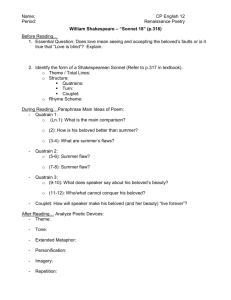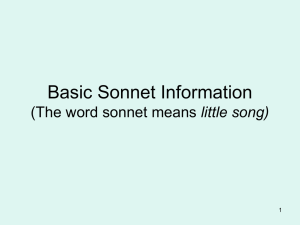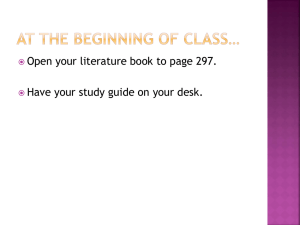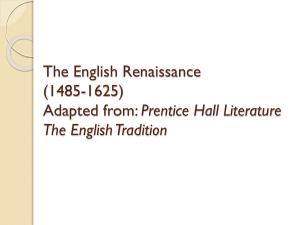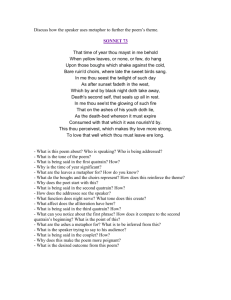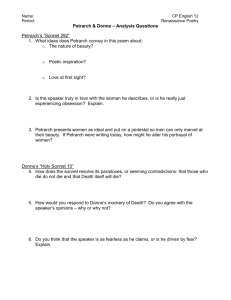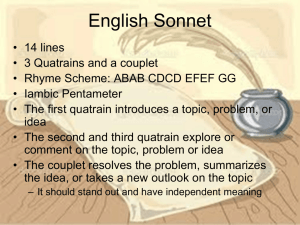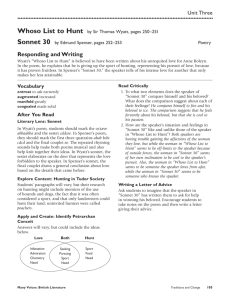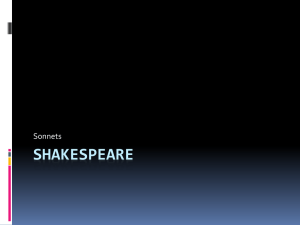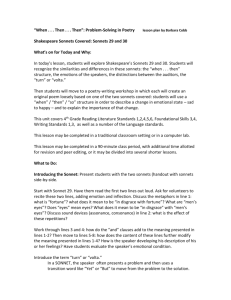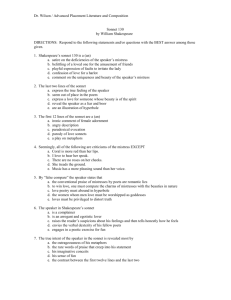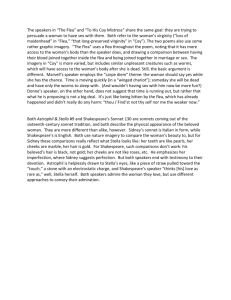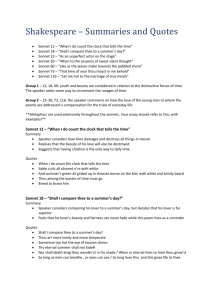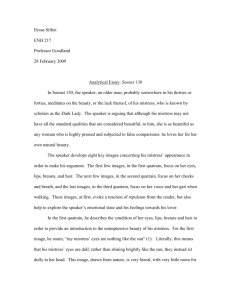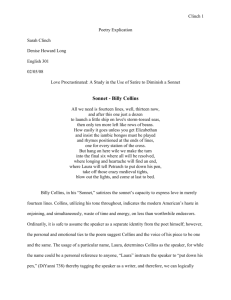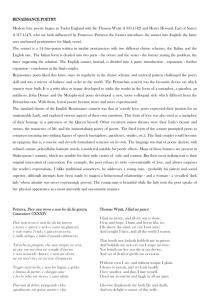NONFORMULAIC APPROACH: Essay Exemplar
advertisement
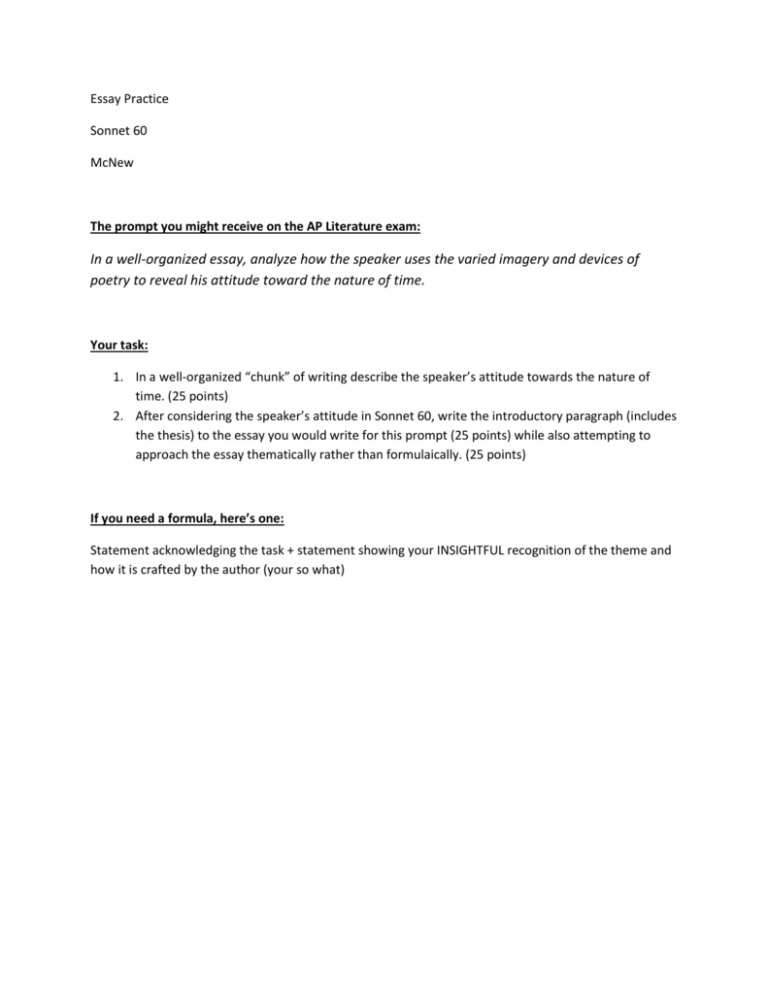
Essay Practice Sonnet 60 McNew The prompt you might receive on the AP Literature exam: In a well-organized essay, analyze how the speaker uses the varied imagery and devices of poetry to reveal his attitude toward the nature of time. Your task: 1. In a well-organized “chunk” of writing describe the speaker’s attitude towards the nature of time. (25 points) 2. After considering the speaker’s attitude in Sonnet 60, write the introductory paragraph (includes the thesis) to the essay you would write for this prompt (25 points) while also attempting to approach the essay thematically rather than formulaically. (25 points) If you need a formula, here’s one: Statement acknowledging the task + statement showing your INSIGHTFUL recognition of the theme and how it is crafted by the author (your so what) Essay Example: Shakespeare’s Sonnet 60 is preoccupied with the relentlessness of time, the inevitability of death, and the power of poetry to immortalize. With confidence, the speaker asserts that though time is a relentless, natural force that destroys all living things, poetry is a solution for the young man’s inevitable decline and death. The poem follows the classic structure of a Shakespearean sonnet. In the first quatrain, the speaker who is also the poet compares the progress of time to the continual cycle of waves hitting the shore in a simile. The second quatrain presents time as the primary source of human life, for good and for ill. Time brings humans into existence, nurtures them to adulthood, and then destroys them in death, ironically. The imagery suggests that the force of time is natural, yet melancholy and sinister. In the third quatrain, the speaker compares wrinkles to lines of crops and death to harvesting (10-12) the “scythe” is particularly rich in imagery: it is both a natural tool and an attribute of the grim reaper. Finally, in the couplet, which asserts that poetry is a way of defeating time by achieving immortality, stands defiantly apart from the rest of the sonnet: its rhyme is self-contained “stand” and “hand” and the alliteration of the “d” suggests authority and abruptness and illuminates the poet’s defiance of death. The speaker illustrates his thesis through three distinct images of time. First, time is a natural, inevitable force, like the tides. Next, time becomes a divine force that first gives life and then takes it away. Finally, time is portrayed as an aggressive, destructive assailant. The force of these images is rooted in the strong verbs “crawls” (6), “transfix” (9), and “delves” (10). The imagery suggests perpetual motion: the waves “make towards” the shore (1), the minutes “hasten” (2), and the baby “crawls” towards death. The personification of time blurs the line between the force and its human victims. To further strengthen his argument, the language and rhythm of the poem mimics the movement of the perpetual waves. The sonnet follows the basic iambic pentameter structure, but Shakespeare introduces trochees where iambs should be to give the effect of tides rolling in and out. “Crooked” is no iamb and yet in iambic pentameter the first syllable has to be unstressed. Using “crooked” in line 7 and “make” in line 1 to complicate the meter twists the rhythm back on itself and then back again and is the perfect way of acting out, at the level of language, the movement of the waves.
